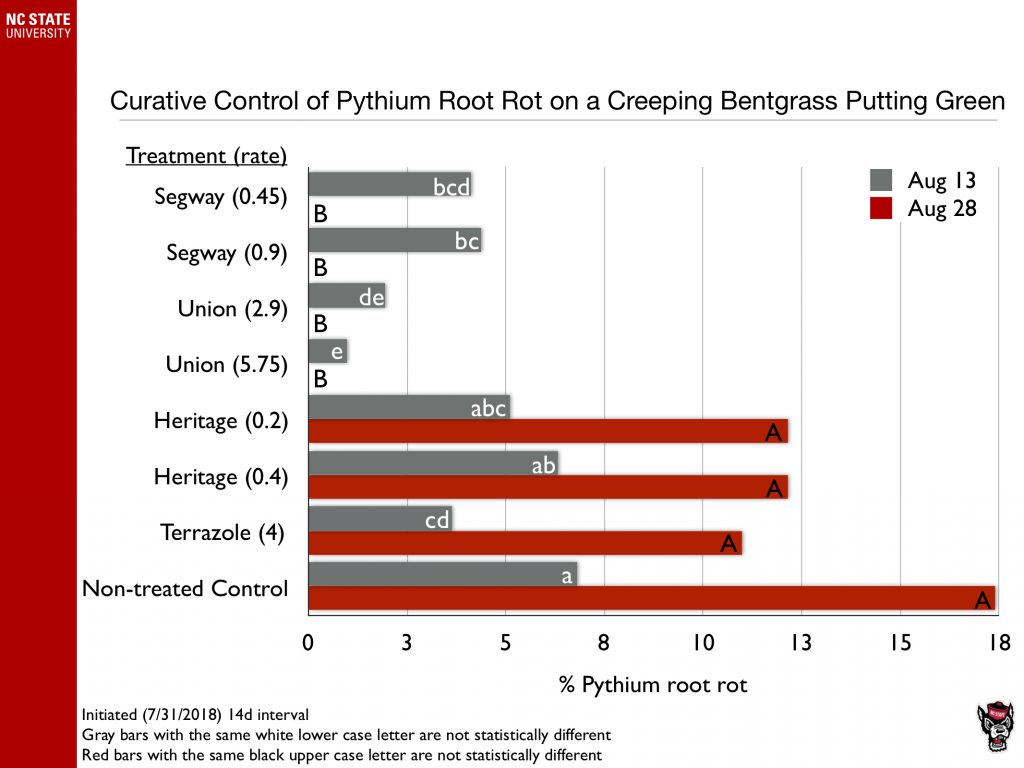2018 Field Trial Highlights
go.ncsu.edu/readext?604124
en Español / em Português
El inglés es el idioma de control de esta página. En la medida en que haya algún conflicto entre la traducción al inglés y la traducción, el inglés prevalece.
Al hacer clic en el enlace de traducción se activa un servicio de traducción gratuito para convertir la página al español. Al igual que con cualquier traducción por Internet, la conversión no es sensible al contexto y puede que no traduzca el texto en su significado original. NC State Extension no garantiza la exactitud del texto traducido. Por favor, tenga en cuenta que algunas aplicaciones y/o servicios pueden no funcionar como se espera cuando se traducen.
Português
Inglês é o idioma de controle desta página. Na medida que haja algum conflito entre o texto original em Inglês e a tradução, o Inglês prevalece.
Ao clicar no link de tradução, um serviço gratuito de tradução será ativado para converter a página para o Português. Como em qualquer tradução pela internet, a conversão não é sensivel ao contexto e pode não ocorrer a tradução para o significado orginal. O serviço de Extensão da Carolina do Norte (NC State Extension) não garante a exatidão do texto traduzido. Por favor, observe que algumas funções ou serviços podem não funcionar como esperado após a tradução.
English
English is the controlling language of this page. To the extent there is any conflict between the English text and the translation, English controls.
Clicking on the translation link activates a free translation service to convert the page to Spanish. As with any Internet translation, the conversion is not context-sensitive and may not translate the text to its original meaning. NC State Extension does not guarantee the accuracy of the translated text. Please note that some applications and/or services may not function as expected when translated.
Collapse ▲While we conduct 60-70 field trials annually, these are a few of the more interesting ones we thought we would share with everyone. Be sure you pay attention to all the details in each slide and feel free to contact us if you have any questions!
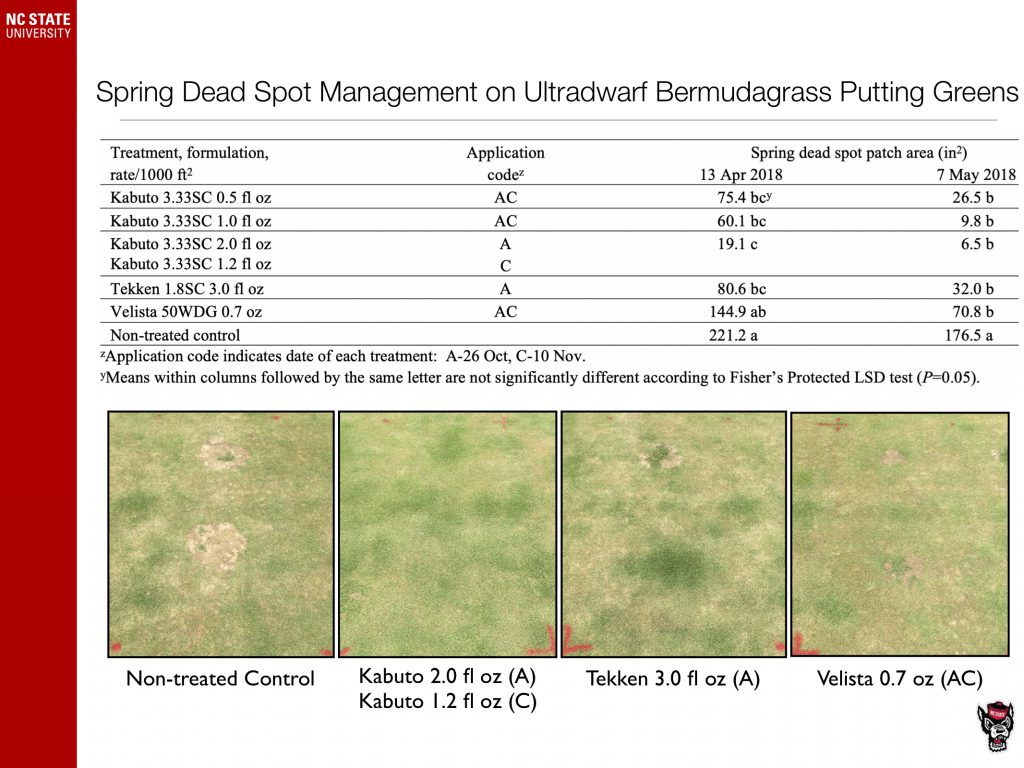
Spring dead spot severity was extreme with an average patch diameter of 221 in2 in the non-treated controls. All treatments suppressed spring dead spot when compared to the non-treated control on the May 7th rating date.
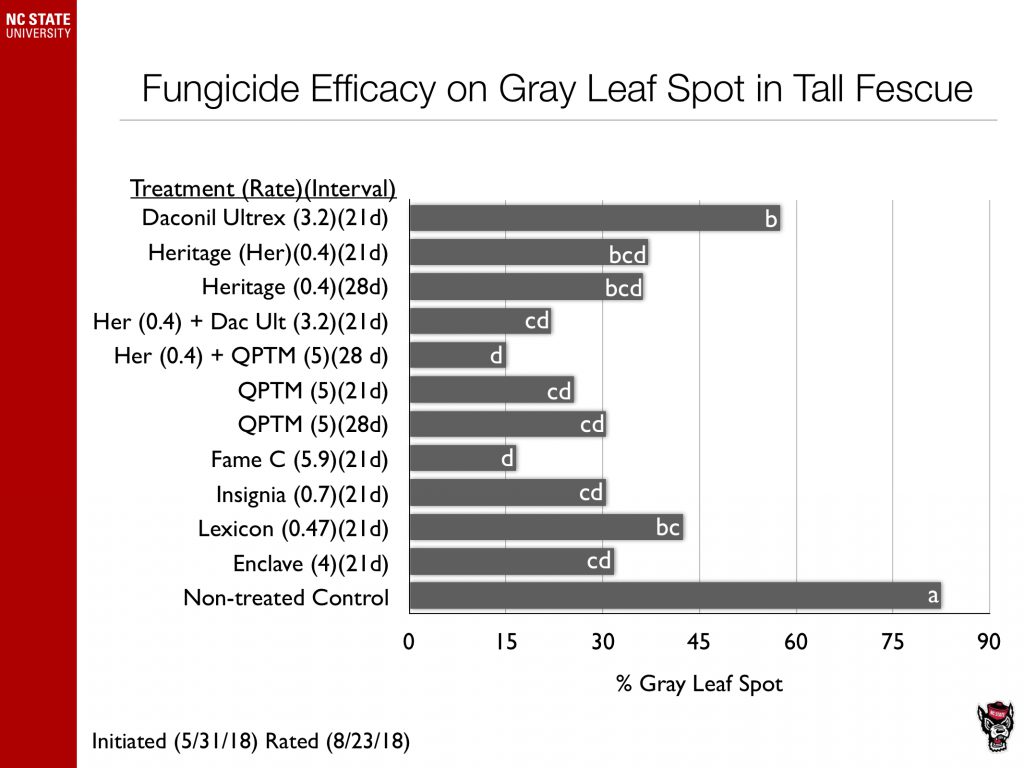
Gray leaf spot (GLS) pressure was intense in 2018. All treatments suppressed GLS when compared to the non-treated control. Heritage + QP TM and Fame C provided the best suppression of GLS.
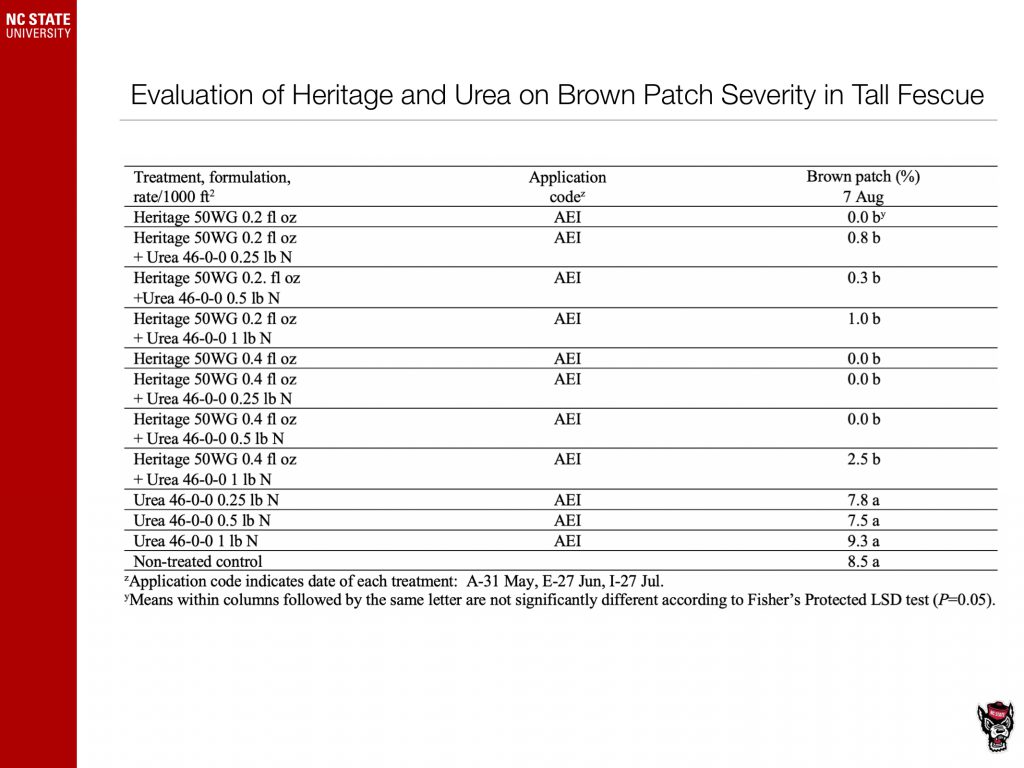
Brown patch pressure was low relative to previous years in Raleigh, NC. Treatments containing Heritage provided excellent suppression of brown patch when compared to non-treated controls and plots that just received urea. Brown patch severity in plots treated with urea throughout summer months was no different than the non-treated controls.
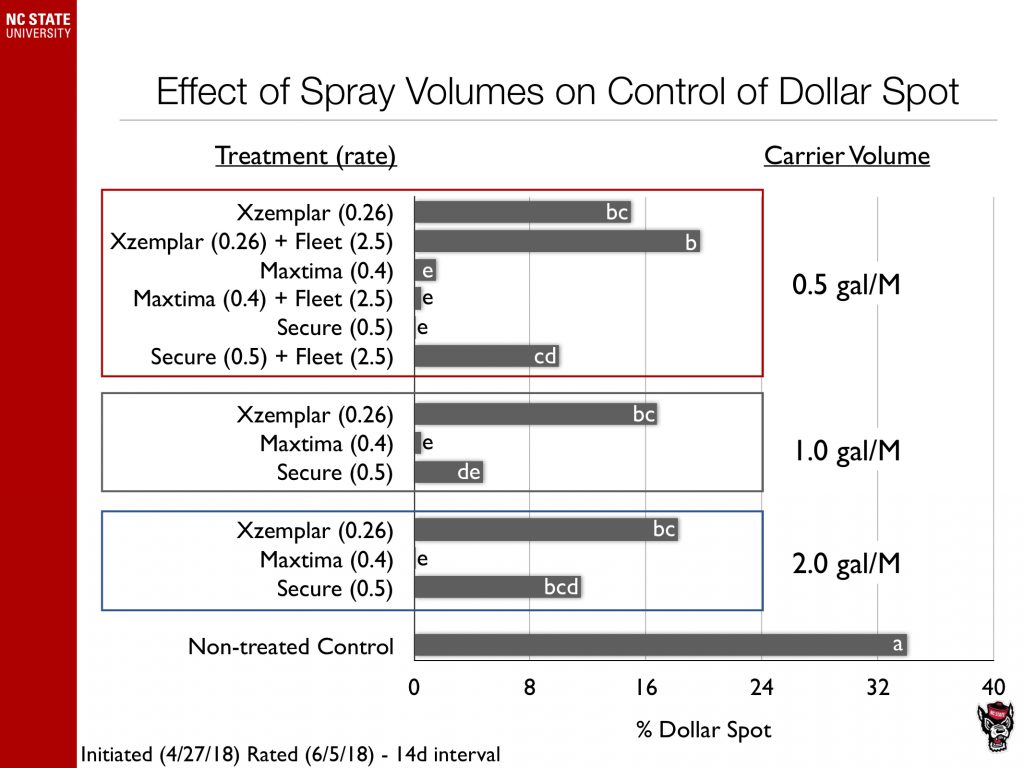
Dollar spot was severe in 2018 with disease severity peaking on June 5th. All treatments regardless of spray volumes suppressed dollar spot when compared to the non-treated control. Secure worked best when applied in 0.5 or 1 gallon/1000 ft2 when compared to 2 gallon/1000 ft2. When Secure was applied with a wetting agent efficacy was reduced at 0.5 gallon/1000 ft2. The new product coming from BASF, Maxtima, performed well regardless of spray volume.



